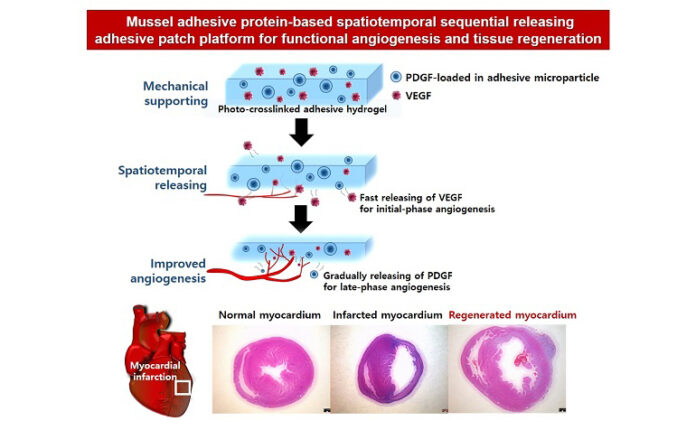
When the blood supply to a part of the body gets cut, the cells start to die. This is a process called ischemia, a condition that scientists are trying their best to find a way to reverse.
While progress in this area is still slow, one way to recover the blood supply to ischemic tissues is by replacing the necrosed blood vessels with new ones through angiogenesis, as explained by a group of researchers from the Pohang University of Science and Technology (POSTECH), South Korea.
As written in their study, published in Biomaterials, angiogenesis is a “complex” procedure. It involves the release of the right growth factors at just the right time. These factors are: VEGF (endothelial growth factor) for the early stages in angiogenesis, and PDGF (platelet-derived growth factor), for the late stage. However, this sequential release is fairly difficult to achieve inside the body.
A new way to achieve artificial in vivo angiogenesis
To tackle this conundrum, they came up with a hydrogel patch that can supply the different growth factors when applied to the skin of ischemic tissue or as a surgical sealant. The patch consists of VEGF and PDFG in a hyaluronic acid and bioengineered mussel adhesive protein (MAP) suspension.
Interestingly, MAP is the agent that blue sea mussels use to stick to underwater surfaces. According to the researchers, its biocompatibility and other properties make it a useful biomaterial to use in regenerative medicine.
While the researchers are yet to test their patch in human subjects, their animal testing was a success. When applied to rats with myocardial infarction and skin damage, the patch did stimulate the growth of blood vessels which helped return supply to the damaged tissues. This, subsequently, encouraged the tissues to regenerate, restoring their functional capability.
In a statement, researcher and corresponding author, Hyung Joon Cha said:
“We have developed a new platform that can efficiently deliver angiogenic factors spatiotemporally by using the formulation property of mussel adhesive protein, an original biomaterial. This platform can play a key role in the neovascularization treatment market as it uses biocompatible biomaterials that are harmless to the human body.”
Source: Biomaterials
https://www.sciencedirect.com/science/article/abs/pii/S0142961221001307?via%3Dihub



